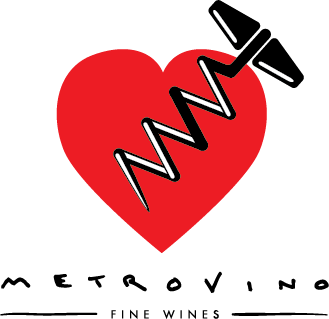WEINGUT SCHÄTZEL
Early on in my wine career, I was briefly employed by a regrettably commercial wine agency who was in the process of purging their portfolio of interesting wine. Commissioned with the task of liquidating a few lingering cases of 2005 Gunderloch Nackenheim Rothenberg Riesling Auslese, I naturally took advantage of the situation to pull the cork on a bottle. This precipitated a veritable revelation; the wine didn't just solidify my love for German wine, it turned me into a lifelong Riesling lunatic. Thus, one of my pivotal Riesling epiphanies was catalyzed by a bottle from the Rheinhessen's Rheinfront, or Roter Hang (Red Slope).
The Roter Hang is an east and southeast-facing stretch of vineyards belonging to the villages of Nackenheim, Nierstein and Oppenheim in eastern Rheinhessen. Historically, these riverside sites were the most important vineyards of the Rheinhessen, and until the last couple of decades, the only ones held in high regard for generations. All of the old books on German wine that I've accumulated over the years praise these sites as being amongst the best Riesling vineyards in the country, and yet for the majority of my career, contemporary critics and winegrowers alike have been lamenting the underperforming nature of Rheinfront producers. The first harbinger of change was when Klaus-Peter and Julia Keller acquired vineyards in Nierstein in 2010. Almost a decade later, I inquired with a consummate German wine authority as to whether or not there was anything else stirring on the Roter Hang... He replied that “stirring” was a serious understatement, and urged me towards Weingut Schätzel in Nierstein.
Kai Schätzel took control of his family operation in 2007 at the age of 27, continuing a 650 year family tradition of winegrowing. His predecessors lacked his inordinate qualitative ambitions, despite holding excellent parcels in Niersteiner Pettenthal, Hipping and Ölberg, among other great vineyards. He implemented significant viticultural changes in terms of biodynamic farming and unorthodox canopy management in order to mitigate the effects of climate change and delay sugar accumulation. This way, his warm vineyards (by German standards) produce light but extremely flavourful wines with a modicum of potential alcohol. Beneath the streets of Nierstein, and following a brief maceration on skins, the wines ferment spontaneously in ancient stuck and halbstuck (1200 and 600L ovular barrels). The single-site wines remain on their lees until bottling.
As if fundamentally great wine from a small, biodynamically-farmed family operation on the Roter Hang isn’t exciting enough, Weingut Schätzel is also stylistically compelling to us. Approximately 35% of the wines that Kai and co-cellarmaster Madeline Stößel make, up and down the quality hierarchy, are kabinetts. This is very welcome because kabinett, especially when it’s featherweight and barely sweet, seems borderline extinct in the Rheinhessen. Yet it could be said that both proportionately within the portfolio, and in terms of the fact that the best parcels and fruit are devoted to it, Schätzel is more dedicated to the category than any other producer in Germany.
Emblematic not only of the kabinetts, but of a Schätzel wine in general, is the irresistible combination of dazzling complexity and energetic deliciousness. These Rieslings are simultaneously delicate and intense, eloquently communicating their noble vineyard origins with untamed clarity.
- Al Drinkle






